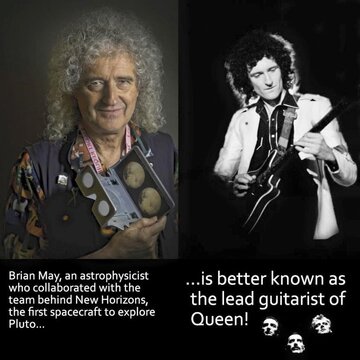Tyger
Paranormal Adept
Very much remain interested. Was not able to attend the conference, however.You were quite active posting about this topic. Did you lose interest or change your mind about it in some ways? Did you go to the conference?

New Horizons Update: Pluto and Planetary Origins| Space News
BTW, interesting side story to the Pluto Mission - Brian May -

"PhD in Astronomy, updating research and data re: presentation of dissertation on motion of interstellar dust.
"After more than 30 years lapsed since first starting doctoral studies, he earned his doctorate from Imperial College London in astrophysics after a successful thesis defense on August 23, 2007. The thesis is entitled, "Radial Velocities in the Zodiacal Dust Cloud"."

